Vignettes of an American-Iraqi Art Festival in Kurdistan.
SoJust, the Art of Social Justice, was an international arts festival designed by the English Department and Drama Program at the American University of Iraq, Sulaimani (AUIS) to encourage the rising generation of intellectual, social activists in their current and future projects. It was backed by the US State Department and hosted six American artists for a week of workshops, classroom visits, panel discussions, plays, poetry readings and other events. The vignettes that follow are snapshots from the festival.
Jamal Khambar
The poet, famous in Kurdistan, the first face to be broadcast decades ago by Kurdish television, waits at the table with Bzhar, AUIS’ media relations officer, and Soran, an emerging poet who is also an AUIS student. By 9pm, the restaurant has filled with smoke and men. Built narrowly, tables on both sides of the small aisle that leads to the back, the restaurant forms a perfect gauntlet for a woman. A crest of muted conversation rolls behind me as I head for Jamal Khambar’s table.
Khambar keeps ordering: hummus, chicken tikka, fatoush, hot glasses of beef broth and fresh orange juice. But when the two of us can’t pull ourselves away from his books to eat the food, he stops. He sips at his whiskey, I my orange juice, and he begins to read. With tables crowded in the restaurant, he has to lean into me more than is considered appropriate. The two of us, bent over his book, ear to ear, he intones the words, caressing each syllable. He twists himself around the lines, coaxing emotion from them. I become an ear. The restaurant falls away.
He is reading the poems he would like for me to translate for the reading we’re hosting together as the festival’s opening night. He has chosen poems he dedicated to specific women who have died in honor killings. One poem mourns, satirically, the meaning “honor” has come to have in Kurdish society. The lovers in his poem cry out:
“Go inside … bar the doors and the windows.
The knife is coming … the dagger is coming … honor is coming!
Go inside.
Don’t open the door, even for the clouds.
Don’t open the window, even for the rain.
Daggers are falling like rain, honor has begun to storm,
Don’t open the sky, even for God … go inside!”
Later, after he and I read his work, in Kurdish and English, to the gathered SoJust audience, students swarm toward him, elbowing each other for a chance to ask more questions or get a picture with him. What we imagined would be an hour’s reading pushes deeper into the evening. Khambar hands his phone to me from inside the throng of students. Please would you call my friend, he asks, I was supposed to meet him. Make pretty apologies? Then he disappears back into the cluster of questions, into the buzz of fame.
Castle Climb
Heather Raffo joined Neil Shea and a small group of student-writers: Umniyah, Mohammed, Saud and Mewan. They headed out of the city. Shea began talking with the students about what they were seeing, using the natural landscape around us to discuss how a writer sees. The striations on the hillside: what were they? Geological features or goat paths, worn over decades of grazing? The augers resting by the roadside beside piles of aluminum poles: what is happening in this village? At the top of the range, before bouncing on the bus’ shocks down into the valley, a herd of goats in the road stopped them. A water tank had been opened on the shoulder and the animals were flocking, drinking, unconcerned with the driver who honked and yelled out the window. A small puppy, guarding the goats, barked back.
Community and Memory, a workshop on photography and the process of memorializing, began in the city of Sulaimani and took its students to Halabja. The site of Saddam Hussein’s 1988 chemical attacks, Halabja is a gravitational center in the semi-autonomous Kurdish region for community and commemoration. Radcliffe Roye, a photographer, and Michael Galinsky, a filmmaker, worked with students as the workshop leaders and Jillian Armenante, an actor and director, accompanied them as an observer.
When they arrived at the base of the hillside, the castle ruins looming above, the students groaned. The climb to the castle comes in three parts. The first is uphill, but steady: a nice walk. The second is steeper, a scramble from pasture to the top of an almost vertical rise. The third is on the flat top, tracing the edge to the castle entrance. Umniyah, revealing her deep fear of heights, rested with Raffo below an overhang. The rest of us pushed on to the castle, writing as we went, looking at our surroundings and contemplating the nature of seeing.
Mewan noticed the way that water flowed through the landscape below the ruins. It was the end of spring, the last of the water, and the hills had begun to brown, though their crevasses remained green. Wherever the land creased, it kept its moisture. The castle’s water catchment system, hundreds of years old, revamped with concrete to preserve the original masonry, still sits within what would have been the original walls and still collects water. Exploring the cistern’s construction, Neil discovered the almost human hair of a goat. Where there’s hair, there must be bones. Someone had walked their meal up the mountain and slaughtered it, leaving the hooves and head to rot in the sunlight several feet from the path. The guts they left next to the water, where they must have washed their meat.
The group of students at the top walked over lines of stone that hinted at old walls, peered through what must have been windows and up chimneys that still conducted air. In one room, they found six alcoves perfect in their peaked domes. In another, at the edge of the castle exposed to the sun, Neil pointed out carnivorous plants: long vines lined with little green jugs. The cilia around the opening allowed bugs to enter easily, but made escape impossible. Once a bug fell in, it became lunch, like the goat at the fortress well, dissolved in the stomach of the plant. A horrible way to die, and Saud wanted to see the process. He caught a bug, dropped it in. Then, taking pity, he shook the plant upside down until the bug tumbled out. “I felt bad,” he said.
At the road again, hours later, they ran into a man who lives nearby and has been appointed by the Sulaimani Museum as the castle guardian. Neil prompted the students to ask the man questions about the castle. “It’s called Sirochik,” he said. But he knew little more. The castle, its former occupants, were nearly as much as mystery to him as they were to the visitors.
Slogans
The visiting artists began to play a game: If the KRG had a slogan, like Las Vegas or New York City, what would it be? Shea suggested: Iraqi Kurdistan — we got this. He had just passed a pick-up truck on the highway with a horse, tethered complacently in the truck’s bed. Chris Merrill, director of Iowa’s International Writing Program, offered: Kurdistan — it is not what it will be. He reflected for a moment, laughed, and added: “Yes, Virginia is for lovers, but West Virginia is open for business.” This game of mottos, what they say about a place, the people living there, intrigued him.
He had just come from Baghdad and felt both uplifted by the creativity he’d seen and deeply unsettled by the way the city had felt. The Baghdad book fair, he said, was vibrant, but US officials and visitors ran between the cover of buildings.
In Iraq, women often shy away from singing or dancing in public. It is considered unfeminine and immoral to drink or smoke. Reputation is both essential and fragile.
Driving from Erbil to Sulaimani, through the Red Valley, green before summer’s heat, it was hard for him to believe that he was still in the same country. After he led a poets’ field trip to Three Oaks, he drove through the Naked Valley to Lake Dukan. From the rocky shore, he dove into fresh snowmelt. Swimming in Iraq. Merrill laughed again, perched, shivering and drying in the last hours of the day. “Baghdad,” he said, “it is what it is.”
The Women
All the plays that AUIS students have performed under Peter Friedrich’s leadership have confronted their audiences with relevant and vital questions. Raffo’s 9 Parts of Desire portrays Iraqi and Iraqi-American women, with all their various desires, before, during and after the American invasion. A series of monologues, the play showcases its actresses.
In Iraq, women often shy away from singing or dancing in public. It is considered unfeminine and immoral to drink or smoke. Reputation is both essential and fragile. Under these conditions, this cast of young women threw themselves into their characters.
One is an Iraqi woman exiled in London. On opening night, the young woman’s character saunters onto stage, British punk rock blaring, swinging an empty bottle of Jack Daniels. In a burst of emotion, she improvises: the bottleneck becomes a fret and she wails on her glass guitar. Throwing her head back, she sinks to her knees, still shredding. The audience gasps, then, in sudden exaltation, whoops and applauds.
Another character, an irreverent and brutally honest artist who is killed in the invasion, tells a joke: Above a restaurant hangs a sign, “You eat for free! We’ll give your grandchildren the bill.” A young man eats and eats until he is contented. His waiter hands him a bill. “Oh, there must be some confusion,” the young man says. “No, there’s no confusion,” the waiter says, “this is your grandfather’s bill.” As the audience sits in contemplative silence, the character cackles. Into the silence, she laughs herself breathless.
A third character, an Iraqi-American woman living in New York City when the invasion begins, lists the names of her relatives back home in Iraq. As she intoned her list, I felt audience members around me making their own: names of dear ones lost, names of family members and friends still in danger. I found myself listing names I had learned in my two years of teaching and living in Sulaimani: names I didn’t know when our country began the invasion, names I came to know and love, names of people who had survived. The actress kept going, her list relentless, each name passing her lips like a rosary bead between fingers, calling out love across the continents that separated her from home.
The Professional Victim
Community and Memory, a workshop on photography and the process of memorializing, began in the city of Sulaimani and took its students to Halabja. The site of Saddam Hussein’s 1988 chemical attacks, Halabja is a gravitational center in the semi-autonomous Kurdish region for community and commemoration. Radcliffe Roye, a photographer, and Michael Galinsky, a filmmaker, worked with students as the workshop leaders and Jillian Armenante, an actor and director, accompanied them as an observer. Armenante had her own interest in the events of Halabja: She was directing a production that examined the Herero genocide in Africa during the Second Reich.
Genocide is a life-long concern for Armenante. “When something that global happens,” she said, “it always distills to the personal for me. I took in each image [in the Halabja Museum] and tried to pay respect as much as I could to as many names on the wall as I could.” She didn’t realize until she had completed her tour and was watching the closing film of the exhibit, she didn’t realize until her guide, Omed, pointed at the screen and said, “That’s me,” that he was one victim of the tragedy. There he was, on screen, in 1988, sobbing and talking to reporters, and wearing the white piece of cloth that had been draped over the six family members he had lost.
The two embraced, tears in their eyes. He said: “Please tell my story – please tell my story.” Her eyes watered. She embraced him again. Days later, Armenante still felt reverberations from the encounter. “The fact that he worked there, among photos and videos of his own personal tragedy for years and years and years left me with chagrin,” she said.
Levantine Viper
Muhammed spotted a snake, sitting in the courtyard outside the administrative building at dusk. He waved Neil over. Without a thought, Neil picked it up, looked it over, and carried it to a line of shrubs at the edge of the courtyard. We found out later that it was a Levantine Viper: highly venomous. I laughed: “Well, at least it was a small one.”
“No,” he said, laughing, too, at his own dumb luck. “Those are worse: They don’t know how to control their venom yet.”
“Will There Be Violence?”
We left for dinner in the gardens of Mangal. Poised above the river sometimes clogged by construction debris and misdirected sewage, these gardens can be quite cool and spacious. Over salt-soaked blanched almonds and cucumber salad dressed with lemon juice, Galinsky and Roye began arguing with a student about the pitfalls of national pride. Competing with the student’s escalating volume, they only wound him up.
Galinsky kept repeating, “I’m not proud to be an American.” Roye went further, asserting, “Obama has done nothing for black folk in America.”
It is easy purchase for an American in the Middle East to condemn his country and his country’s leaders. These statements’ pyrite glitter can seem like the only counterweight to extreme and unexamined nationalism.
Merrill sat listening. These were individuals whose trip had been funded by the US State Department. These were artists making statements with no room for uncertainty. After 45 minutes, he interrupted.
“You’re an idiot,” he said to Galinsky.
“I’m sorry?” said Galinsky, stunned.
“No, no, you’re right, I’m sorry,” Merrill said, “you’re a f**king idiot.”
One of the girls attending the dinner looked to Shea and murmured, “Will there be violence?”
“Oh, no,” Shea replied, “They’re just arguing.”
A few days later, I discussed the event with university colleagues. They showed me day-old video footage of Iraqi diplomats beating Jordanian supporters of Saddam at a seminar on mass graves in Amman. “This is where we live,” they reminded me.
*[Note: Read the full anthology of the SoJust Festival here.]
The views expressed in this article are the author’s own and do not necessarily reflect Fair Observer’s editorial policy.
Support Fair Observer
We rely on your support for our independence, diversity and quality.
For more than 10 years, Fair Observer has been free, fair and independent. No billionaire owns us, no advertisers control us. We are a reader-supported nonprofit. Unlike many other publications, we keep our content free for readers regardless of where they live or whether they can afford to pay. We have no paywalls and no ads.
In the post-truth era of fake news, echo chambers and filter bubbles, we publish a plurality of perspectives from around the world. Anyone can publish with us, but everyone goes through a rigorous editorial process. So, you get fact-checked, well-reasoned content instead of noise.
We publish 2,500+ voices from 90+ countries. We also conduct education and training programs
on subjects ranging from digital media and journalism to writing and critical thinking. This
doesn’t come cheap. Servers, editors, trainers and web developers cost
money.
Please consider supporting us on a regular basis as a recurring donor or a
sustaining member.
Will you support FO’s journalism?
We rely on your support for our independence, diversity and quality.



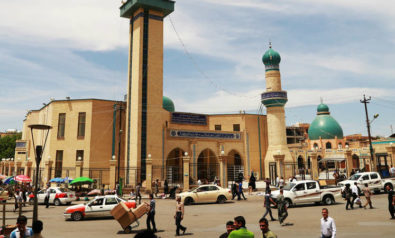


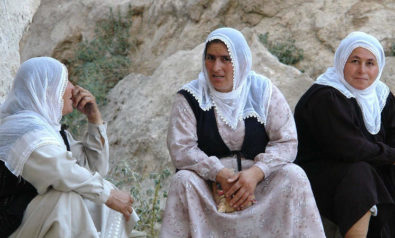

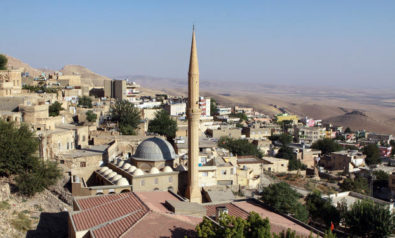
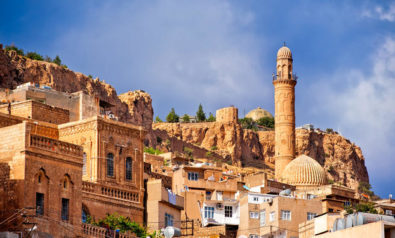
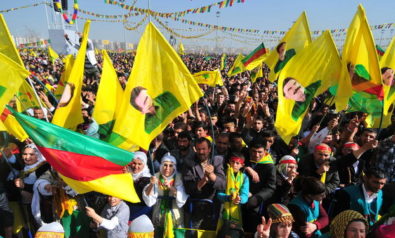
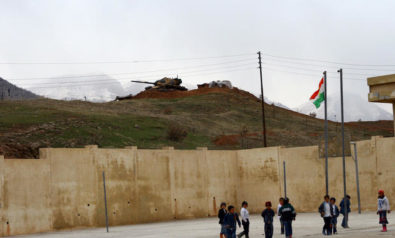

Comment